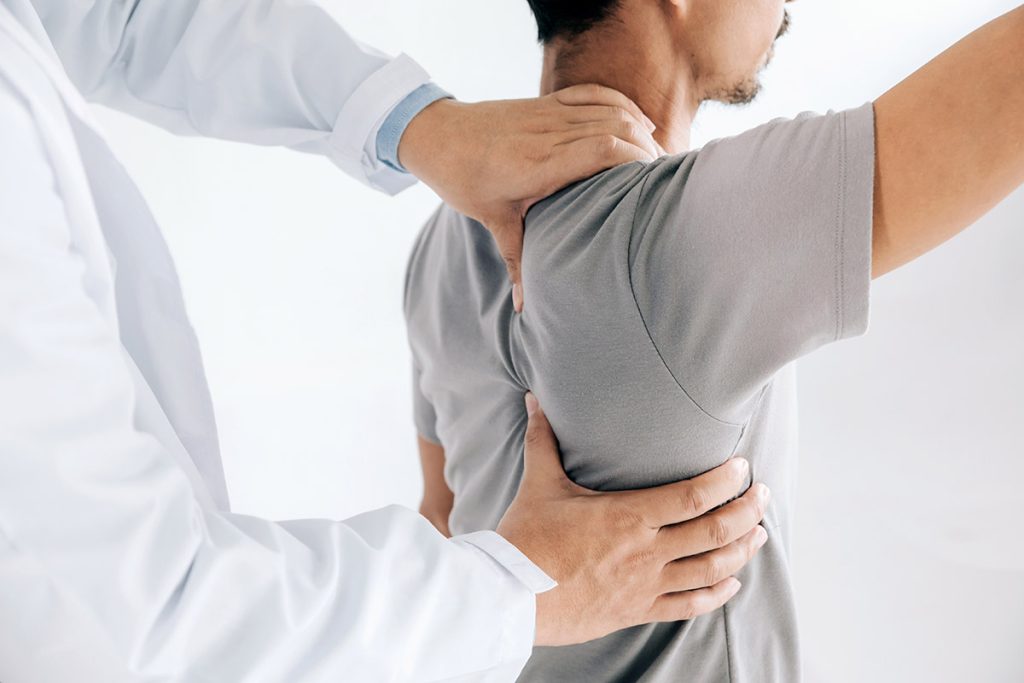Shoulder surgery rehab: what to do and what to expect?

The shoulder is the most movable joint in the body allowing multiple planes of movement. Muscles, tendons, and ligaments hold the humeral head in place in a shallow socket, which can make the shoulder unstable and more prone to injury.
Shoulder Injury Statistics
According to the American Academy of Orthopaedic Surgeons, shoulder injuries accounted for 4.5 million doctor visits in 2022, with an estimated healthcare cost of $3 billion (Varacallo, 2022). Frequently, shoulder injuries result from sporting activities that require repetitive and forceful movements of the shoulder, but they can also stem from performing everyday activities that place stress on the shoulder structures.
Surgical Treatment
Often times, shoulder problems require surgical treatment to correct dysfunction. Shoulder surgeries are commonly associated with labral tears, instability, impingement, and rotator cuff tears. The successful outcome of any shoulder surgery may depend largely on the surgeon’s skills as well as appropriate rehabilitation (Ghodadra et al., 2009).

Goals of Post-Operative Rehab
For optimal shoulder function post-operatively, care must be taken to protect the healing tissues and facilitate proper healing. The main goals of a physical therapy program post-operatively are to protect and promote healing of the repair, restore motion and strength, and eventually function. Inappropriate management after surgery, such as stressing the healing tissue too soon, can damage the repair, and delayed rehabilitation may lead to a stiffened and non-functional shoulder. Therefore, a post-operative rehabilitation program is crucial for appropriate management and guidance to optimize recovery.
Study on Post-Operative PT Outcomes
A retrospective cohort study conducted by Brenan et al. (2010) analyzed 856 patients who attended physical therapy after four categories of shoulder surgery (unilateral instability repair,rotator cuff repair, rotator cuff repair with subacromial decompression,or subacromial decompression) and found significant improvement in function from the first treatment to discharge. They used the Disabilities of the Arm, Shoulder, and Hand Questionnaire (DASH) to evaluate the pain and functional status of the upper extremity at the initial evaluation and at discharge. The dash is scored 0-100, with a higher score representing more pain and limitation. The average initial DASH score of these post-surgical shoulder patients was 60, and at discharge, it was 25. They received an average of 16 PT visits.
The researchers found that a meaningful and statistically significant clinical improvement was achieved by approximately 80% of the patients.
Results at Stover PT
At Stover PT, like the study aforementioned, we utilize the DASH to evaluate the progress of my patients with upper extremity conditions. The graph above shows the documented DASH scores of 95 patients who underwent various types of shoulder surgery (rotator cuff repair, subacromial decompression, unilateral instability repair, etc.) and were treated post-operatively at Stover PT. The average initial DASH score for these patients was 60 and at discharge was 21. The number of PT visits averaged 16 with an average duration of care of 8 weeks.
PT Treatment Methods
We utilize a combination of treatments that may include therapeutic exercise (PROM, AAROM,AROM, RROM), manual therapy techniques, functional training, and thermal/electrical agents to optimize the patient’s recovery and function. I, combine evidence-based practice and clinical expertise to help achieve my patients’ goals and return them quickly to their activities.
Tips for Successful Recovery
For a Shoulder as Good as New After Surgery Let an experienced Physical Therapist guide you through the healing process and return to function Encourage effective communication between surgeon and PT Begin early and safe mobilization to prevent shoulder joint stiffness Begin an individualized strength program guided closely by an experienced PT.
References
- Varacallo, M. (2022, September 4). Rotator Cuff Syndrome. StatPearls – NCBI Bookshelf. https://www.ncbi.nlm.nih.gov/books/NBK531506/
- Ghodadra, N., Provencher, M. T., Verma, N. N., Wilk, K. E., & Romeo, A. A. (2009, February 1). Open, Mini-open, and All-Arthroscopic Rotator Cuff Repair Surgery: Indications and Implications for Rehabilitation. Journal of Orthopaedic & Sports Physical Therapy. https://doi.org/10.2519/jospt.2009.2918
- Brennan, G., Parent, R., & Cleland, J. A. (2010, January 1). Description of Clinical Outcomes and Postoperative Utilization of Physical Therapy Services Within 4 Categories of Shoulder Surgery. Journal of Orthopaedic & Sports Physical Therapy. https://doi.org/10.2519/jospt.2010.3043





